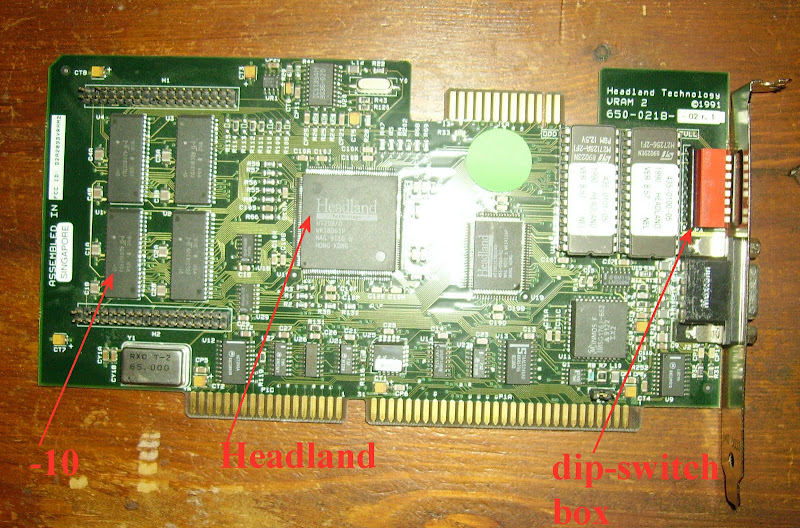As always, thanks a lot for the great retro info, people. I've just discovered something really interesting! Please see the photo. I plugged in that small Realtek ISA VGA card, and was disappointed to see the screen full of garbage at the BIOS POST stage. I cleaned the contacts twice, and tried it in 2 ISA slots. That didn't fix the problem.
But then I was determined to try again, and I just had a funny "plan of action". I don't know why I tried this, but I'm glad that I did, because it worked! I removed the controller card. That fixed the problem. What's going on? Some kind of resource problem? Possibly, but here's the interesting bit - I put the controller back in to the mobo, but removed the compact flash drive. I replaced it with a 2.5" HDD. The card works absolutely fine now. I removed the HDD, and put the CF back in. The problem reappears - the BIOS POST screen is full of corrupted garbage, and the system is unusable.
So, if you buy an old video card, and it shows garbage on the screen, it might be OK. Instead, it might be some resource problem. In this case, something weird is going on with the controller + CF + VGA card.
Edit: This is so weird. I've just tested half a dozen CFs, and the weird problem mentioned above only happens with one of them. My main testing CF unit! It's a 512MB San Disk. All the others I have tried don't cause this weird problem to occur. I've tried 128MB, 256MB, and 2GB CFs. They all work fine, and don't cause this issue.

